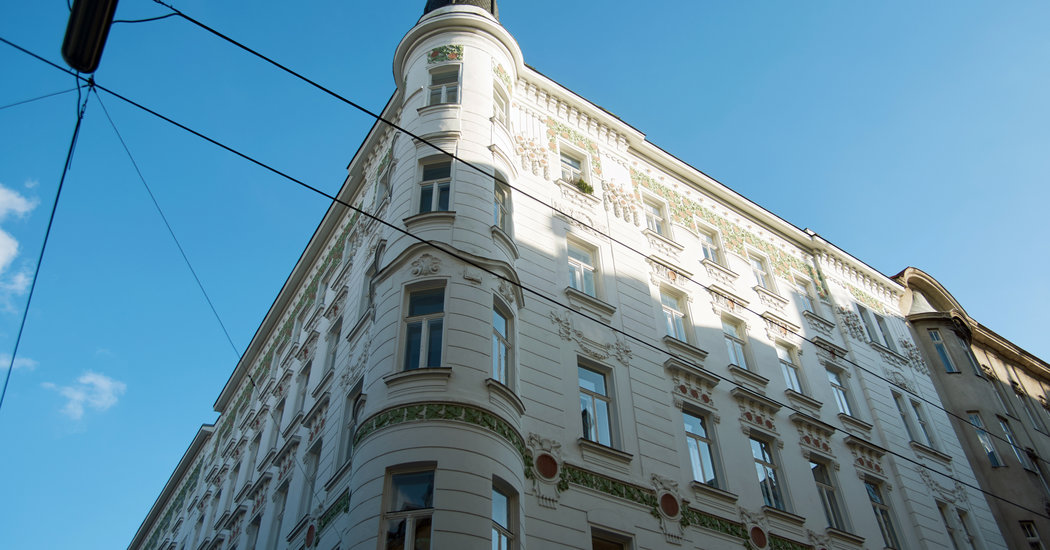
The Eighth District is very traditional, said Michaela Orisich of Otto Immobilien in Vienna, which is listing the property, with a number of parks, good public and private schools, and easy access to major highways and the city center via public transport. City Hall is nearby, and the Vienna airport is about 30 minutes away, she said.
MARKET OVERVIEW
The Viennese real estate market largely sailed through the 2008 recession unscathed, agents said. According to a report issued by Knight Frank real estate in London, home prices in the city rose 55 percent from the collapse of Lehman Brothers to June of last year. Overall prices in Austria rose 34.7 percent in the same period, the report said.
Agents cited a number of reasons, including a limited supply of new and renovated apartments in the desirable city center, Austria’s stable economy and conservative banking system, and limits on foreign buyers that had discouraged speculation and flipping.
When the crisis hit, said Peter Marschall, the owner of Marschall Real Estate in Vienna, “A lot of people invested in real estate as an alternative to shares. It was a secure investment.”
The luxury and second-home market in Vienna has traditionally centered on apartments in the First District, a Unesco heritage site with a wealth of Baroque architecture as well as the Imperial Palace. In recent years, as the high-end market has grown, a number of historic buildings in the center have been converted to luxury apartments. Prices in the First District range from about $1,000 per square foot to three times that or more for the most exclusive penthouses.
Buyers looking for houses or villas will find them in the 13th District, west of the center, as well as in the 18th and 19th Districts to the north. “You are 15 minutes by car from the city center, but you are in the countryside,” Mr. Marschall said. The very best historic houses in those districts can sell for up to $12 million, agents said, though many are under $4 million.
Prices tend to fall as buyers move away from the First District, said Alexander Koch de Gooreynd, the international residential director of Knight Frank in London, which is partners with Otto in Vienna, and developers are starting to respond to the limited supply there.
In districts like the second and fifth, he said, “It’s still easy to walk into the city center, but you’re looking at price points from 750,000 to 2.5 million euros,” or about $850,000 to $2.8 million. “That is where we’re getting a lot of interest.”
The swiftly rising prices have brought some soul-searching among Austrians, said Eggert Koch, the owner of Dr. Koch & Company real estate as younger people are finding it harder and harder to afford property. “There are two opinions,” he said, about whether the jump in prices is a good thing for the city. “One is that prices are too low — if you compare to London or Paris, it’s much, much cheaper. The other feeling is that young people can’t afford to buy here if you didn’t inherit money. If it’s a world city, then we’re too cheap, but if you live here and make money here, it’s too expensive.”
Nonetheless, Vienna remains a relative bargain, said Christian Sommer, the managing director of Austria for Engel & Voelkers. “If you want to spend maybe 6,000 or 7,000 euros per square meter,” or about $630 to $735 per square foot, “you can get good quality in a good location. That puts us in a good situation compared with other international locations. You get two or three times more here for the same price.”
Looking ahead, there are signs that the market is cooling down, even if prices have not fallen. Chief among them is the uncertain economic situation in Russia, as well as the conflict in Ukraine. “I think this year it will not be so easy, because we are strongly influenced by the economy in Eastern Europe, and a lot of buyers come from there,” Mr. Marschall said. “But if it gets better, they will come back.”
WHO BUYS IN VIENNA
Apart from Austrians, a majority of buyers in Vienna come from Eastern Europe or Germany, agents said. “We have about 60 percent Austrians and 40 percent foreigners, especially the high-end residential market, mainly from Eastern European countries like Russia and Ukraine,” Mr. Marschall said.
Mr. de Gooreynd said buyers from Eastern Europe “see Vienna as a very safe environment. You can walk around the center of Vienna and no one knows who you are, no one cares who you are.”
He added that recently his agency had seen “a lot of expat Austrians looking to get back into the market, because they feel that Vienna is a safe investment.”
BUYING BASICS
Buyers from European Union countries enjoy the same rights and privileges as Austrians when buying property, but those from other countries will need to obtain permission from the government. This is generally obtained without too much difficulty in Vienna, agents said, if the buyer is not planning to use the property purely as an investment.
Agents said buyers should budget about 10 percent of the purchase price for fees and taxes. There is a real estate transfer tax of 3.5 percent and a registration fee of 1.1 percent. Unlike in many countries, the broker’s commission is usually divided in half, with buyers customarily paying about 3 percent. In addition, foreign buyers will need to retain the services of a lawyer and pay notary fees. Those costs together are about 2 percent to 3 percent of the purchase price, according to Knight Frank.
WEBSITES
Vienna tourism: wien.info
City of Vienna: wien.gv.at
Austria tourism: austria.info
Kunsthistorisches Museum: khm.at
Unesco World Heritage Site: whc.unesco.org/en/list/1033
LANGUAGES AND CURRENCIES
German; euro (1 euro = $1.13)
TAXES AND FEES
Building costs and taxes are about $430 (380 euros) a month.
CONTACT
Michaela Orisich, Otto Immobilien, (43 1) 512 77 77-323, Otto.at







